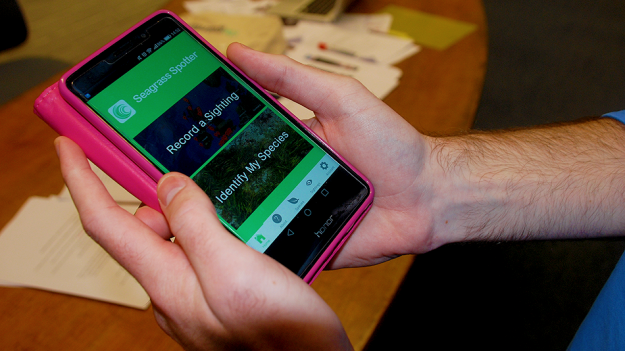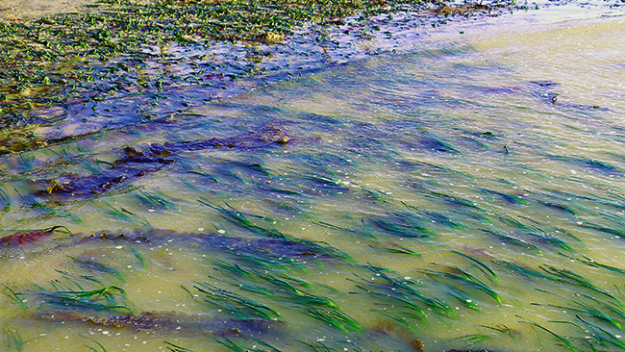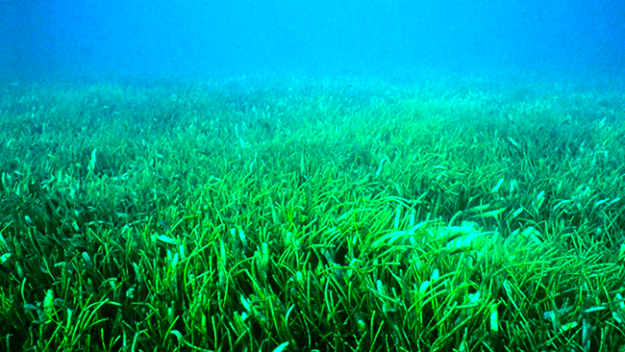Most people have never heard of seagrass meadows. Can a Cardiff mobile app save them?

An application made by Cardiff researchers is empowering everyday people to collect important ecological data on unique and endangered underwater meadows.
‘Seagrass Spotter’ is a mobile app which allows anyone to take and submit photographs of these environmentally crucial plants, allowing scientists to greatly expand their research’s scope.
“The idea of the app is anyone can download it, go out into seagrass meadows, take a picture, and it tells us where it’s been taken,” said Dr. Leanne Cullen-Unsworth, co-director of the charity behind the app, Project Seagrass. “It’s super helpful because one of the big problems with seagrass is that it’s so widespread, and research effort into seagrass meadows is way not enough considering the size and scope of where it is. We just can’t be in every place, all the time, to look at what’s happening.”

As widespread as seagrass is, they were once far more abundant. “Essentially in the 1930s there was a widespread wasting disease that wiped out approximately 50% of Europe’s seagrass,” said Dr. Cullen-Unsworth. “Since then, recovery’s been very much limited. That’s due to lots of things, mainly environmental parameters, water quality and coastal development.”
Seagrass meadows are crucial environments which reduce global warming by sequestering large volumes of carbon dioxide and supporting hundreds of species, such as cod, crabs, shrimp, turtles and manatees.
The plants are also unique in being the only true marine flowers in existence. Despite looking similar to seaweed, seagrass are actually more closely relate to land grasses and lilies.
Despite their importance, and being the online true marine flowers in existence, seagrass meadows are relatively unknown. Dr. Cullen-Unsworth said, “It has been phrased as the ugly duckling of the marine environment. It doesn’t get as much attention as something like a coral reef, because at first glance, it’s not as charismatic.”

The BBC documentary series ‘Blue Planet 2’ recently featured seagrass meadows in their episode ‘Green Seas’, which may help bring attention to the habitat and its perilous position.
Anyone interested in downloading the app and becoming a researcher could take a thirty-minute drive to Magor, to visit the largest seagrass meadow near Cardiff. They could also investigate the ones in Milford Haven or Pembrokeshire. Or perhaps one of the app’s “citizen scientists” will be able to discover a whole new meadow.
“It’s a global resource,” said Dr. Cullen-Unsworth. “It’s really a crucial habitat that needs to be on people’s agendas. People need to care about it, to start getting it preserved properly.”
“Seagrass” by Ian Boyd is licensed under CC BY-SA 2.0.
“sanc0209” by NOAA Photo Library is licensed under CC BY-SA 2.0.
